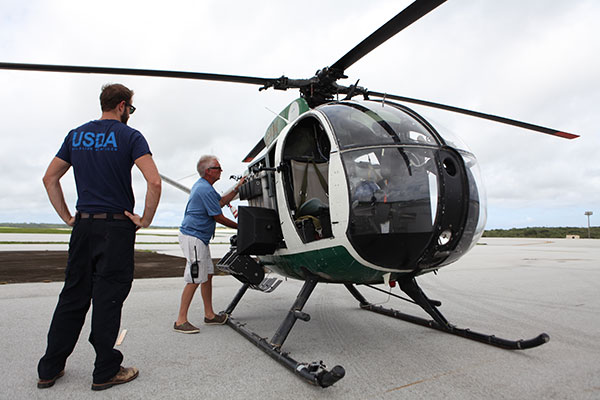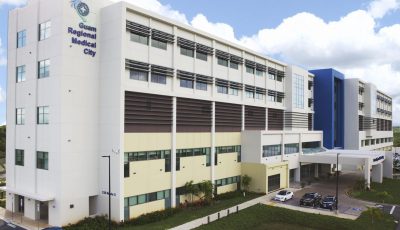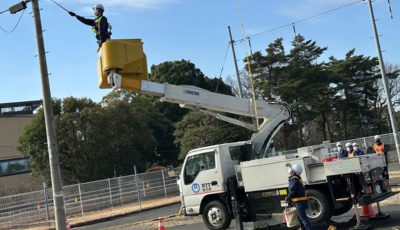Fight vs Guam’s brown tree snakes takes to the air

In this file photo dated Oct. 4, 2018, local and federal partners conduct aerial suppression of brown tree snakes at the 136-acre habitat management unit on Andersen Airforce Base. The area is surrounded by a snake exclusion fence and is an interagency test site established for biological resource studies, including invasive species control and forest restoration. (LANCE CPL. SAMUEL BRUSSEAU)
ASAN, Guam—As part of a Department of Defense-funded project associated with the Marine Corps realignment, Joint Region Marianas and the U.S. Department of Agriculture-Wildlife Services made three brown tree snake aerial bait applications last March 11-15 to the Habitat Management Unit at Andersen Air Force Base.
The Aerial Delivery System is part of an ongoing, cooperative effort to suppress brown tree snakes to levels that support the reintroduction of Guam’s native birds such as the sihek (Guam Micronesian kingfisher) and ko’ko’ (Guam rail).
“The introduction of the Aerial (Delivery) System into this new phase enhances landscape level conservation efforts [in] Guam in our ongoing battle against the brown tree snake,” said Robert “Goose” Gosnell, USDA WS state director.
Continuous improvement is key, according to John Salas, JRM regional environmental director.
“As we increase the effectiveness of Guam’s snake control technology we also increase the chances that we can bring back our native seed dispersers like the sali (starling) and fanihi (fruit bat) to heal our forests.”
The aerial bait applications have provided an opportunity to invite federal and government of Guam resource agencies to review plans, observe and provide necessary input. The strategy calls for more drops mid-year and the interagency team looks forward to more opportunities for collaborative planning and participation from all Guam stakeholders.
Naval Facilities Engineering Command Marianas, University of Guam Center for Island Sustainability, USDA-Animal and Plant Health Inspection Service, Wildlife Services, and National Wildlife Research Center, and U.S. Geological Survey – Fort Collins Science Center, Guam Division of Aquatic and Wildlife Resources, U.S. Fish and Wildlife Service are all part of this coordinated, interagency conservation project. (PR)



























